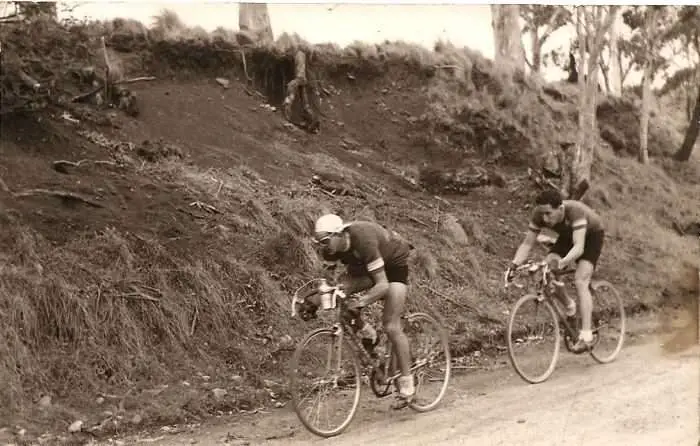
Long before the advent of tubeless tyres, electronic shifting, GPS navigation, power meters and now suspension – on gravel bikes – there were the hard men of road racing. These lads raced steel framed road bikes with downtube friction shifting, exposed brake cables and tyres that more often than not, weren’t up to the job of traversing tricky gravel road surfaces.
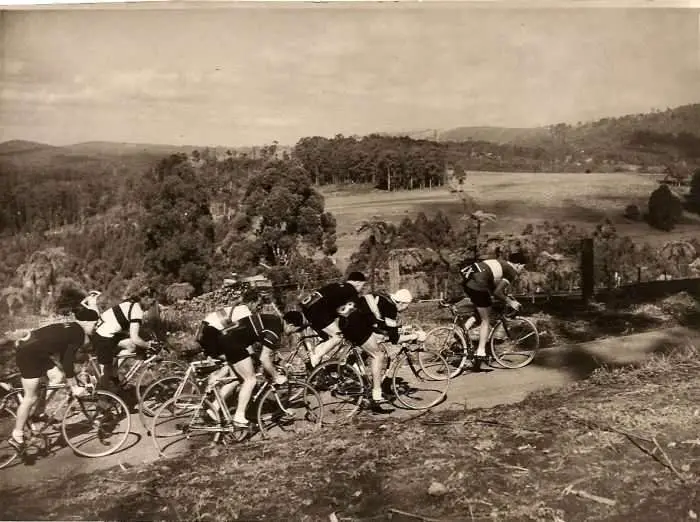
The photos in this article may be from Australia, but on the other side of the planet, the same was happening in Europe. Big name events like the Giro d’Italia, Tour de France and Vuelta a Espana, were often raced on lengthy sectors of dirt and gravel roads, particularly those in the high mountains. That was the norm, and these riders were tough. There was no obsessing over frame compliance, posing for the perfect selfie or seeking affirmation from a group of strangers on social media. These blokes rode hard and got the job done.
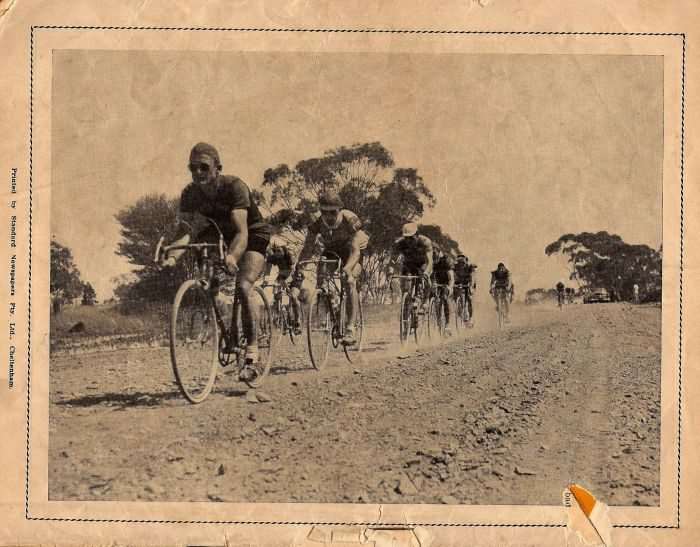
Nowadays, thanks mostly to massive advancements in clothing, bicycle design, manufacturing techniques and the advent of frame materials such as carbon fiber and titanium (titanium began appearing in the early 1970’s with frames such as the Speedwell and Teledyne Titan), cyclists of all types can enjoy a comfortable and pleasant experience, even on the worst of road conditions.
In the photo above is the father of Will Arnold, the gentleman who kindly contributed these photographs. The photo was taken after Will’s father broke a wheel and crashed, taken out by a pothole on a dirt road. The end result was a broken jaw, that was only diagnosed after he rode into the lunch stop. Will’s father was forced to abandon the race due to “blackouts”. Can you say, tough as nails?
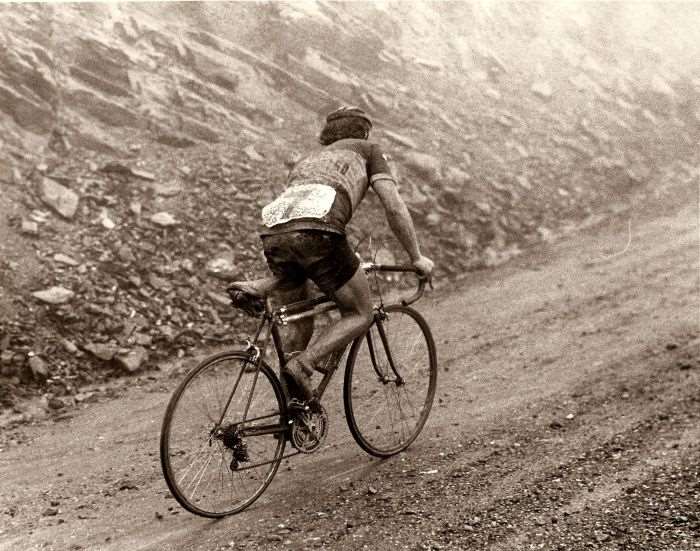
Tyre technology was primitive compared to today’s choices of rubber. But even in the 1940’s and 1950’s, riders knew that bigger tyres with more air volume rode better, and had less chance of puncturing. Will’s father referred to such tyres as “big bag tyres”. As a contingency plan, riders of this period sometimes carried a spare tyre, wrapped in an appropriate manner around their torso/shoulders.
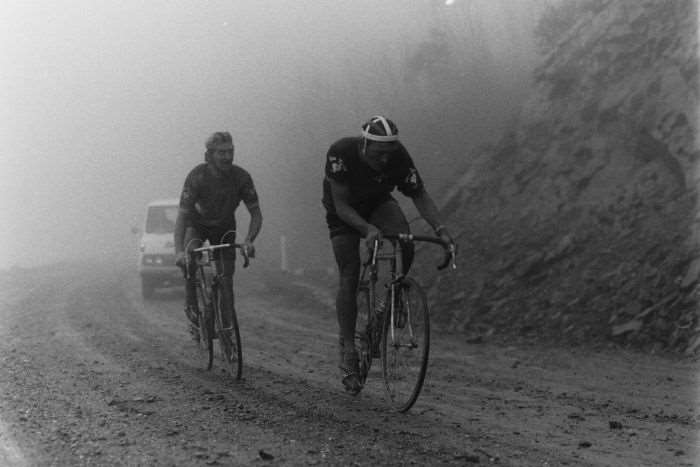
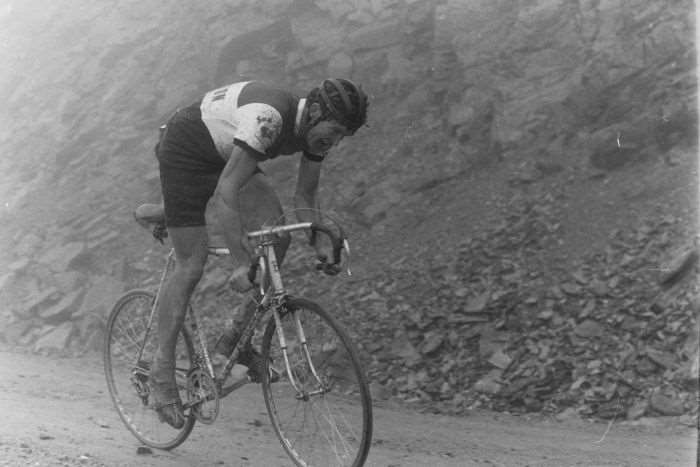
Demonstrated by the photo above, there were no compact or micro compact cranksets, and no 11-speed cassettes. Gearing was often a combination of 53 / 42 chainrings on the crankset, and a five-speed freewheel (or much less in earlier days), with an 18 tooth cog as the largest available.
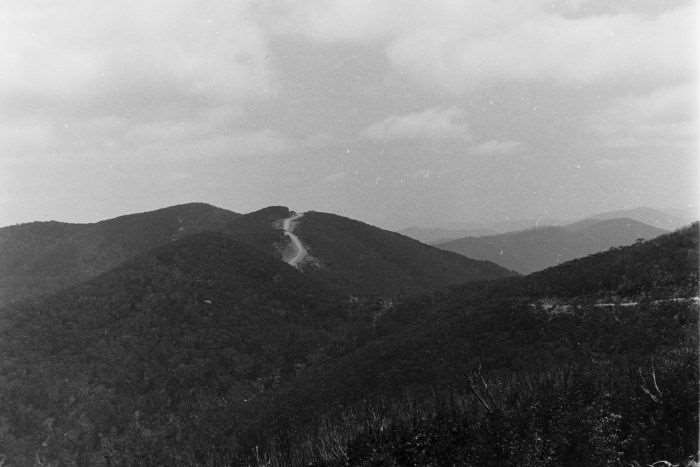
Fast forward to August 2017 – The next time you think you’re having a rough day during a gravel bike ride – rolling electronic shifting, wide and comfy tyres and a high zoot carbon fiber frame – think about the men in this article. They are the original gravel cyclists, long before it was even a thing.

If you want to rewind the clock and experience some of what these men faced, think about attending L’Erioica in Tuscany, Italy, or the Tour of Ara in South Africa, a six day stage race on gravel roads and retro road bikes.
We hope to present Todd’s race report from the Tour of Ara in the near future.
In the meantime, a enjoy a preview of the Tour of Ara, and photos from each stage of the 2017 race. The Tour of Ara finishes on August 3, 2017.
Thanks for reading!
Huge thank you to Will Arnold of Beechworth, Australia, for granting us permission to use his photographs in this article.



The big improvements since then has been low gearing and bigger tires. The old steel frames were probably more flexible than many carbon frames, and may have been faster on the same rubber.
Christian, I thought I had it tough at L’Eroica last year with 7 gears on the rear… err… not really. You raise a good point about the older steel frames.
JOM
Great article.
If you’re interested, I’ve got some pictures of my grandfather who raced in the early 1900’s against men like Hubert Opperman, on gravel and dirt roads as well. Pop raced the Warnie quite a few times, in those days it was Warnambool to Melbourne…..and it wasn’t unusual for Geelong riders to ride to Warnambool the day before the race! Tough men, indeed!
Yes Steve! Would love to share! I’ve got one pic of Oppie during his insane ride from Freo to Sydney, but more of these legends is better. Please keep me posted.
I have four bikes, three of which are steel frames. Steel is real!
I like to look at the old rando bikes on reneherse.com. My favourites are the ones from the 40’s and 50’s. Many have 1×4 and 1×5 transmissions, somewhat startling when you consider guys (and ladies) were riding them over the Alps. It makes me realize we don’t need a new 12 speed cassette. We need closer adherence to Rule #5. HTFU.
All of us are so soft nowadays.
Wow. this brings back memories of my distant past. I raced as a 19 year old amateur in Europe during my college break in 1962. Woolen jerseys and real chamois lined shorts. In Europe, I raced mostly on cobbled roads. We had steel Stronglight components, cotton tubular tires and bar-end shifters. In Belgium, you didn’t ever want to take your hands off the bars to shift. Here is a story I penned a decade ago about my memories: https://www.dailypeloton.com/displayarticle.asp?pk=12582 . Wish I had some pic’s to share. I’ll scrounge around for some very old photos; but I know I have nothing from Europe 1962.
Re: gearing
“Gearing was often a combination of 53 / 42 chainrings on the crankset, and a five-speed freewheel (or much less in earlier days), with an 18 tooth cog as the largest available”
My single speed (All-City Nature Boy) is a 42 x 16/18. I am going to Fort Collins next month and hope to climb Rist Canyon Road on the 42 x 18, and – if that goes well – am thinking about riding Copper Triangle on it next year, although it won’t be gravel and it won’t be skinny tires. I’m not sure if all this this motivates or scares me. LOL
Dean- 42×18 should be fine for Rist. I’ve done the Copper Triangle, round trip from Dillon, on a fixed gear (Surly Steamroller w/32c tires, front brake) using a 48×16/20 with a flip-flop hub. Good times! Have fun on your trip!
JOM- another great article! Nice work. Keep em coming.
Tim, thanks mate! You’re a tough nut… I’ve done the Copper Triangle albeit on a very lame road bike with a 34 x 25 as the low gear. So not worthy.
Dude!
Hope you heal fast but tell the tale even faster!
K-Dogg
Todd has minor injuries… he’s still racing.
Notice how most of the riders in those pictures aren’t gaunt 55 kilo mountain goats? Most of them probably did heavy manual labour, hence the muscular robustness…..would eat weedy gravel cyclists for breakfast!
Bit of a shame that the end closes with overseas rides rather than the existence of Australian options.
Manny, I think that will change… Aussie gravel is coming along…
The rider in the opening part of the story is also my dad, Bill “Shifty” Arnold. Those legs came from many long miles on the bike in all weathers, cyclong was his passion. Great article.